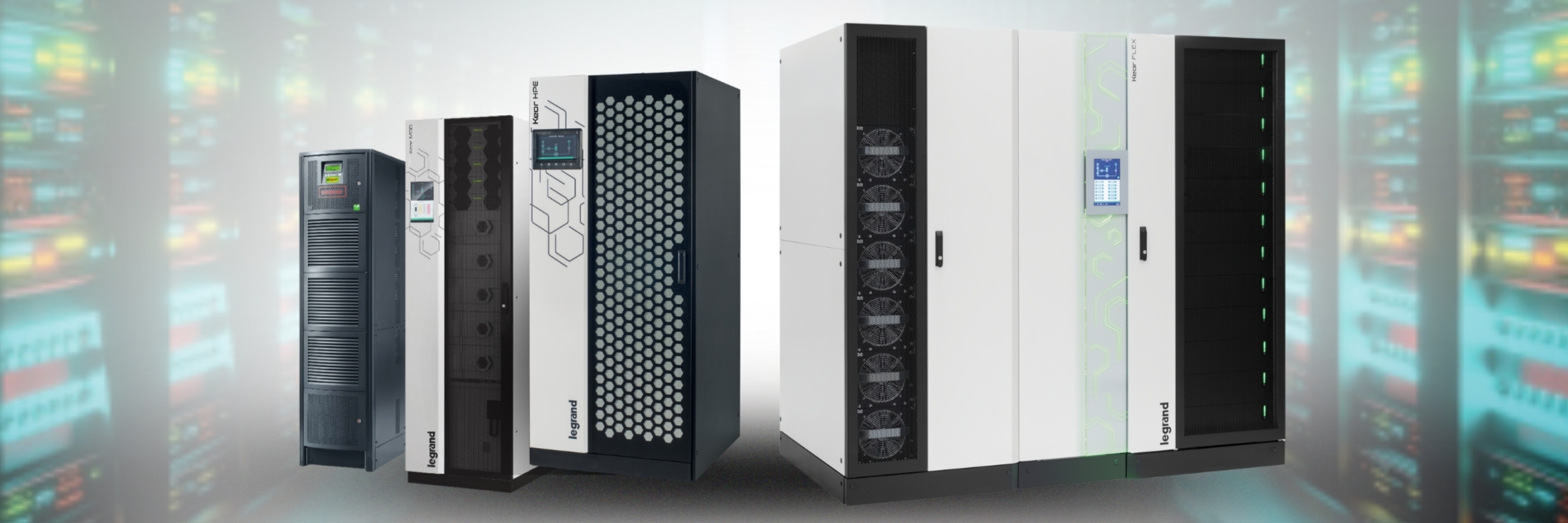Online Double Conversion UPS Technology: Power Protection Guide

Understanding Online Double Conversion UPS Technology
Online double conversion UPS technology represents the pinnacle of power protection systems, continuously converting incoming AC power to DC and then back to clean, regulated AC output. This sophisticated approach ensures complete isolation between input power and protected loads, delivering uninterrupted, conditioned power regardless of utility conditions.
The fundamental principle involves two distinct conversion stages: first, AC utility power converts to DC through a controlled rectifier, then an inverter converts this DC back to precisely regulated AC power. This dual-conversion process eliminates all power anomalies while maintaining continuous operation through seamless battery integration.
Unlike standby or line-interactive topologies that switch between utility and battery power, online double conversion systems operate the inverter continuously. This architecture provides zero transfer time when utility power fails, as the inverter already supplies all load power with battery backup seamlessly integrated into the DC bus.
Core Components and Operating Principles
Essential System Architecture
Modern online double conversion UPS systems comprise five critical components working in concert:
Rectifier/Charger Unit: Converts incoming AC to regulated DC using high-frequency IGBT-based power factor correction circuits or controlled thyristor bridges, ensuring low harmonic distortion, high efficiency, and near-unity power factor, while simultaneously charging the battery bank, supplying the inverter, and compensating for system losses.
DC Bus and Energy Storage: The DC link acts as the system's power hub, incorporating capacitive filtering to stabilize voltage and provide instantaneous energy during transitions. Battery banks connect to this bus, ready to supply power without interruption when utility conditions deteriorate.
Inverter Technology: Advanced pulse-width modulation (PWM) techniques convert DC power back to clean AC output with tight voltage regulation typically within ±1%. Modern inverters utilize sophisticated control algorithms to maintain precise frequency regulation and low harmonic distortion.
Static Bypass Switch: Automatically transfers the load to the utility supply in the event of an internal UPS fault or overload, ensuring uninterrupted operation of critical equipment.
Maintenance Bypass: A manually operated switch or breaker arrangement that allows the UPS to be isolated for servicing while the load is powered directly from the utility or an alternate source.
Control and Monitoring Systems: Intelligent microprocessor-based controllers manage all system functions, from power quality monitoring to battery management and predictive maintenance algorithms.
Advanced Power Conditioning Capabilities
Online double conversion technology protects against all nine IEEE-defined power anomalies: outages, sags, surges, brownouts, overvoltages, line noise, frequency variations, switching transients, and harmonic distortion. The continuous conversion process filters and conditions power regardless of input quality.
The system's ability to regulate both voltage and frequency independently makes it invaluable for applications requiring stable power characteristics. Output can maintain different frequency from input when necessary, accommodating international equipment or frequency-sensitive loads.
Critical Applications and Industry Requirements
Data Centers and IT Infrastructure
Data centers represent the primary application for online double conversion UPS systems due to their zero-tolerance for power interruptions and stringent power quality requirements. Server hardware, storage systems, and networking equipment demand clean, stable power to prevent data corruption, system crashes, and service interruptions.
Modern data centers implementing virtualization and cloud services cannot afford even microsecond power interruptions. Online double conversion topology provides the highest reliability and efficiency while improving Power Usage Effectiveness (PUE) metrics critical for operational cost control.
Healthcare and Medical Facilities
Medical environments require UL 60601-1 certified systems with hospital-grade components and isolation transformers for patient safety. Life-support equipment, diagnostic imaging systems, and surgical instruments depend on uninterrupted, clean power to function safely and accurately.
The continuous power conditioning inherent in double conversion systems ensures sensitive medical equipment operates within specification, preventing false readings or equipment malfunctions that could compromise patient care.
Manufacturing and Industrial Operations
Manufacturing facilities utilizing automated production lines, robotics, and process control systems require online double conversion UPS protection to prevent costly production disruptions. A single power event can result in hours of downtime, scrapped products, equipment damage, and significant impacts on business continuity.
Industrial applications often face challenging power environments with motor starting transients, harmonic-generating loads, and unstable utility conditions. The complete isolation provided by double conversion topology shields sensitive control systems from these disturbances.
Technical Advantages and Performance Characteristics
Superior Power Quality Metrics
Online double conversion systems typically maintain output voltage regulation within ±1% and frequency stability within ±0.1%. This precision exceeds requirements for even the most sensitive electronic equipment.
Crest Factor Capability: Modern systems handle crest factors up to 3:1 at full rated load, accommodating switch-mode power supplies and other non-linear loads common in IT environments. This capability prevents system lockout during high peak current demands.
Harmonic Performance: Advanced filtering and control algorithms minimize output total harmonic distortion (THD) to less than 3% while maintaining high input power factor, typically above 0.99.
Operational Efficiency and Reliability
Contemporary online double conversion UPS systems achieve efficiency ratings exceeding 96% through advanced technologies including:
- Silicon carbide (SiC) power semiconductors reducing switching losses
- Optimized transformer designs minimizing core losses
- Intelligent control algorithms adapting to load conditions
- ECO-mode operation for maximum efficiency during stable utility conditions
Modern double conversion systems provide efficiency within 2-3% of line-interactive designs while delivering substantially superior protection, making the technology increasingly attractive for cost-conscious operations.
Legrand's Advanced UPS Solutions
Comprehensive Portfolio for Diverse Applications

Legrand offers industry-leading online double conversion UPS systems designed for mission-critical applications across multiple sectors. Their comprehensive range addresses requirements from small server rooms to large data centers.
Keor FLEX High-Power Modular UPS: Three-phase online double conversion UPS featuring scalable power from 100kW up to 1.2MW through modular 100kW units. Each module is hot-swappable and integrates advanced bidirectional rectifier technology for seamless integration with renewable energy sources. Thanks to the newest technology, it achieves one of the highest efficiencies on the market at 98.4%. The system supports parallel connection of up to 4 units, delivering up to 4.8MW of total power with flexible N+X redundancy. Designed for smart-grid readiness, minimal footprint, and optimized total cost of ownership.
Keor Mod Modular UPS: Three-phase online double conversion UPS with PWM high-frequency technology delivering 25kW to 250kW in modular 25kW increments. Each 25kW module is hot-swappable and provides complete UPS functionality in just 2 rack units. Units can be paralleled up to 600kW with N+X redundancy capabilities.
Trimod HE High Efficiency Series: Three-phase modular UPS system delivering 10kW to 80kW through individual single-phase modules with hot-swap capability. Features up to 96% efficiency, unity power factor operation, and self-configuring redundant modules that enable maintenance without system shutdown.
Keor HPE Series: Three-phase online double conversion UPS utilizing 3-Level IGBT technology with PWM high frequency, delivering 60kVA to 600kVA. Supports parallel connection of up to 6 units for N+X redundancy and features transformer-free design for optimal space utilization.
Complementary Power Continuity
Static Transfer Switches: Complement UPS systems by providing additional redundancy and maintenance bypass capabilities. These systems enable dual-source power architectures for maximum availability.
Battery Cabinets: Reliable Energy Storage Solutions : Legrand's universal battery cabinets are designed to support all three-phase UPS models. These cabinets ensure efficient energy storage and backup, tailored to meet the specific needs of your power protection system.
UPS Management Systems: Advanced Monitoring and Control: Legrand's UPS management systems encompass software, network management cards, and peripherals that facilitate the management, monitoring, and secure shutdown of UPS units. These systems provide real-time insights into UPS performance, enabling proactive maintenance and ensuring the reliability of critical power infrastructure. By integrating these management tools, data centers can enhance operational efficiency and minimize downtime, aligning with best practices in power continuity.
Implementation Considerations and Best Practices
System Sizing and Configuration
Proper UPS sizing requires careful analysis of both steady-state loads and transient conditions. Consider power factor ratings, as modern IT loads typically operate at 0.6-0.8 power factor rather than unity. Size systems based on both kVA and kW ratings to ensure adequate capacity.
Load Assessment: Evaluate not only current requirements but also future expansion needs. Online double conversion systems excel in environments with varying load profiles due to their consistent efficiency across different operating points.
Environmental Factors: Consider ambient temperature, altitude, and ventilation requirements. Higher temperatures and altitudes derate UPS capacity, requiring larger systems to maintain rated performance.
Maintenance and Lifecycle Management
Preventive Maintenance Programs: Regular inspection of power connections, battery condition monitoring, and thermal imaging prevent unexpected failures. Modern systems include predictive maintenance features that identify potential issues before they impact operation.
Battery Management: Advanced battery monitoring systems track individual cell performance, internal resistance, and temperature to optimize replacement schedules and prevent premature failures.
Software Integration: Modern UPS systems provide comprehensive monitoring and management capabilities through SNMP, Modbus, and proprietary protocols, enabling integration with building management systems and data center infrastructure management (DCIM) platforms.
Future-Proofing Critical Power Infrastructure
Emerging Technologies and Trends
The evolution toward edge computing, 5G networks, and IoT deployments drives demand for distributed online double conversion UPS systems. These applications require compact, highly efficient solutions that maintain the protection levels traditionally associated with large centralized systems.
Lithium-Ion Battery Integration: Advanced battery technologies offer longer service life, faster recharge rates, and smaller footprints compared to traditional VRLA batteries. Modern UPS systems incorporate sophisticated battery management systems optimized for these technologies.
Grid Interaction Capabilities: Future UPS systems will increasingly participate in grid services, providing frequency regulation and demand response capabilities while maintaining their primary mission of load protection.
Strategic Recommendations
Organizations implementing mission-critical power protection should evaluate their requirements comprehensively, considering not only current needs but also future operational scenarios. Online double conversion technology provides the highest level of protection against all power anomalies, making it the optimal choice for applications where reliability is paramount.
Assessment Criteria: Evaluate total cost of ownership including energy costs, maintenance requirements, and downtime risks rather than focusing solely on initial capital expenditure. The superior protection and reliability of online double conversion systems typically justify the investment through reduced operational risks and improved availability.
Vendor Selection: Choose manufacturers with proven track records in critical applications, comprehensive service networks, and ongoing technology development programs. Legrand's extensive portfolio and industry expertise make them an ideal partner for organizations requiring dependable power protection solutions.
Conclusion
Online double conversion UPS technology remains the gold standard for mission-critical power protection, providing complete isolation from utility power disturbances while delivering clean, regulated power with zero transfer time. As organizations increasingly depend on continuous operations and digital infrastructure, the comprehensive protection offered by this technology becomes essential.
The investment in online double conversion UPS systems pays dividends through improved equipment reliability, reduced maintenance costs, and minimized downtime risks. With advancing efficiency technologies and innovative features from manufacturers like Legrand, these systems deliver both superior protection and operational economy.
For organizations serious about protecting their critical operations, online double conversion UPS technology provides the foundation for reliable, uninterrupted power that keeps mission-critical systems running when every second counts.
























 Canada
Canada
 Latin America (English)
Latin America (English)
 Latin America (Espanol)
Latin America (Espanol)
 USA
USA
 China
China
 India
India
 Japan
Japan
 Republic of Korea
Republic of Korea
 South East Asia (English)
South East Asia (English)
 Austria
Austria
 Belgium
Belgium
 France
France
 Germany
Germany
 Italy
Italy
 Netherlands
Netherlands
 Spain
Spain
 Switzerland
Switzerland
 Turkey
Turkey
 UK
UK
 Africa (english)
Africa (english)
 Africa (français)
Africa (français)
 Middle East (english)
Middle East (english)
 Australia
Australia
 New Zealand
New Zealand